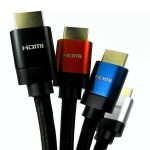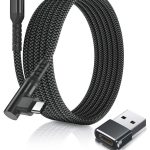You connect your HDMI cable, but nothing happens. Frustrating, right? An HDMI connection not working can be a real buzzkill. But don’t worry; we’re here to help! This guide will walk you through common causes and solutions for troubleshooting HDMI issues.
Contents
- 1 Start with the Basics: Check Your Cables and Connections
- 2 Dive Deeper: Device and Display Settings
- 3 Software Glitches: Updates and Drivers
- 4 Hardware Hiccups: Internal Issues
- 5 Advanced Troubleshooting: Additional Tips
- 6 HDMI Connection Not Working: When to Seek Professional Help
- 7 Resolving Issues Specific to Devices
- 8 Beyond HDMI: Exploring Alternatives
- 9 Conclusion: Reclaim Your Viewing Experience
Start with the Basics: Check Your Cables and Connections
Before diving into complex solutions, let’s begin with the fundamentals. Sometimes, the simplest things can cause the most trouble.
Check the HDMI cable itself
Cables can become damaged or worn out over time. Inspect the cable for any visible signs of damage, like frayed wires or bent connectors. If you spot any issues, try a different HDMI cable to see if that resolves the problem.
Secure the connections
Make sure the HDMI cable is firmly plugged into both your device (laptop, gaming console, etc.) and the display (TV, monitor, projector). Sometimes, a loose connection can prevent the signal from transmitting properly. Unplug and replug the cable on both ends, ensuring a snug fit.
Try different HDMI ports
If your device or display has multiple HDMI ports, try connecting the cable to a different port. Occasionally, a specific port might be malfunctioning.
Dive Deeper: Device and Display Settings
If the basic checks don’t solve the issue, it’s time to delve into your device and display settings. Misconfigurations can often disrupt the HDMI connection.
-
Check input source: On your TV or monitor, ensure you’ve selected the correct HDMI input source that corresponds to the port where your cable is plugged in.
-
Adjust display settings: On your computer or device, go to the display settings and make sure the correct display is selected and the resolution is set to a compatible level for your TV or monitor.
-
Detect displays: If you’re using a laptop, try pressing the “Fn” key along with the key that has a monitor symbol on it (usually one of the function keys). This might force your laptop to detect the external display.

Software Glitches: Updates and Drivers
Sometimes, outdated software or drivers can interfere with your HDMI connection. Keeping everything up-to-date is essential for smooth operation.
-
Update your operating system: Check for any available updates for your operating system (Windows, macOS, etc.) and install them. Updates often include bug fixes and improvements that can resolve compatibility issues.
-
Update graphics drivers: Outdated graphics drivers can cause display problems, including issues with HDMI connections. Visit the website of your graphics card manufacturer (NVIDIA, AMD, Intel) and download the latest drivers for your model.
Hardware Hiccups: Internal Issues
If the problem persists, it’s possible that there’s a hardware issue with your device or display.
-
Damaged HDMI port: Inspect the HDMI ports on both your device and display for any signs of physical damage. If you notice bent pins or debris inside the port, it might need repair or replacement.
-
Graphics card issues: If you’re using a desktop computer, a faulty graphics card could be the culprit. Try connecting your display to another device using the same HDMI cable to see if the issue lies with the graphics card.
-
Internal hardware problems: In some cases, the problem might lie deeper within your device or display, requiring professional repair.
Advanced Troubleshooting: Additional Tips
If you’ve exhausted all the basic troubleshooting steps, here are some additional tips to try:
-
Power cycle your devices: Turn off both your device and display, unplug them from the power outlet, wait a few minutes, then plug them back in and turn them on again. This simple step can often resolve minor glitches.
-
Try a different HDMI cable: Even if your current cable looks fine, try a different one to rule out any cable-related issues.
-
Boot in Safe Mode: If you’re using a computer, try booting into Safe Mode to see if any third-party software is interfering with the HDMI connection.
-
Factory reset: As a last resort, you can try resetting your device or display to its factory settings. However, remember to back up your data before doing so, as this will erase all your personal information and settings.

HDMI Connection Not Working: When to Seek Professional Help
If you’ve tried all the troubleshooting steps and your HDMI connection still isn’t working, it might be time to seek professional assistance. A qualified technician can diagnose the issue and perform any necessary repairs.
An HDMI connection not working can be frustrating, but with a little patience and troubleshooting, you can usually resolve the issue. Start with the basics, check your settings, update your software, and inspect for hardware problems. If all else fails, don’t hesitate to seek professional help.
Remember, technology is meant to enhance our lives, not hinder them. By addressing HDMI connection problems promptly, you can stay connected and enjoy seamless audio and video experiences.
Resolving Issues Specific to Devices
Sometimes, the cause of an HDMI connection not working lies in the specific devices you’re using. Let’s tackle some common scenarios:
Laptop HDMI Not Working
- Check for dedicated display key: Some laptops have a dedicated key (often labeled with a monitor symbol) that toggles between the built-in display and an external display. Press this key, possibly in combination with the “Fn” key, to switch to the HDMI output.
- Disable power-saving features: Power-saving settings might inadvertently turn off the HDMI port to conserve battery. Go to your laptop’s power settings and ensure that the HDMI port is always enabled, even when on battery power.
- Check for conflicting software: Certain software, especially video editing or screen recording applications, might interfere with the HDMI output. Try closing any such software and see if that resolves the issue.
Gaming Console HDMI Not Working
- Check for system updates: Make sure your gaming console’s firmware is up to date. Outdated firmware can sometimes cause compatibility issues with HDMI connections.
- Reset display settings: If you’ve recently changed any display settings on your console, try resetting them to their default values.
- Try a different HDMI cable: Gaming consoles often require high-speed HDMI cables to support higher resolutions and refresh rates. If you’re using an older or low-quality cable, try a newer one rated for high-speed transmission.
TV HDMI Not Working
- Check for firmware updates: Ensure your TV’s firmware is up to date. Manufacturers often release updates to address bugs and improve compatibility with various devices.
- Reset TV to factory settings: If other troubleshooting steps fail, you can try resetting your TV to its factory settings. However, remember to back up any personalized settings or recordings before doing so.
- Check for damaged HDMI port: Inspect the HDMI ports on your TV for any physical damage. If you notice bent pins or debris inside the port, it might need repair or replacement.
Beyond HDMI: Exploring Alternatives
If you’re still experiencing persistent HDMI issues despite exhausting all troubleshooting options, you might consider alternative connection methods:
- DisplayPort: DisplayPort is another popular digital display interface that offers similar capabilities to HDMI. If your devices support DisplayPort, try using a DisplayPort cable instead of HDMI.
- DVI: DVI (Digital Visual Interface) is an older digital display interface that might still be available on some devices. If compatible, you can use a DVI cable with an HDMI-to-DVI adapter.
- VGA: VGA (Video Graphics Array) is an analog display interface that’s becoming increasingly rare. However, if your devices support VGA, you can use a VGA cable with an HDMI-to-VGA converter.
Remember, these alternative connection methods might not offer the same level of audio and video quality as HDMI, but they can serve as a temporary workaround while you troubleshoot or repair your HDMI connection.

Conclusion: Reclaim Your Viewing Experience
An HDMI connection not working can disrupt your entertainment or productivity, but armed with the knowledge and solutions outlined in this guide, you can overcome this hurdle. By systematically troubleshooting the issue, you can pinpoint the cause and restore your seamless audio and video experience.
Remember, patience and persistence are key. Don’t hesitate to revisit the steps and try different approaches until you find the solution that works for you. Soon enough, you’ll be back to enjoying your favorite content on the big screen without any interruptions.


